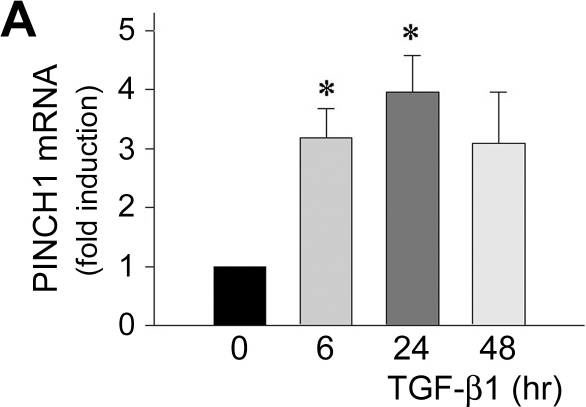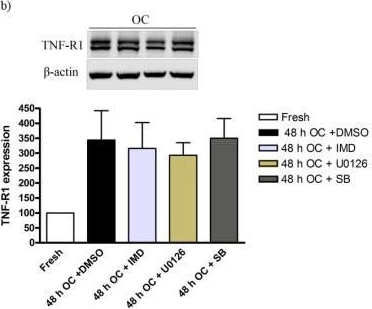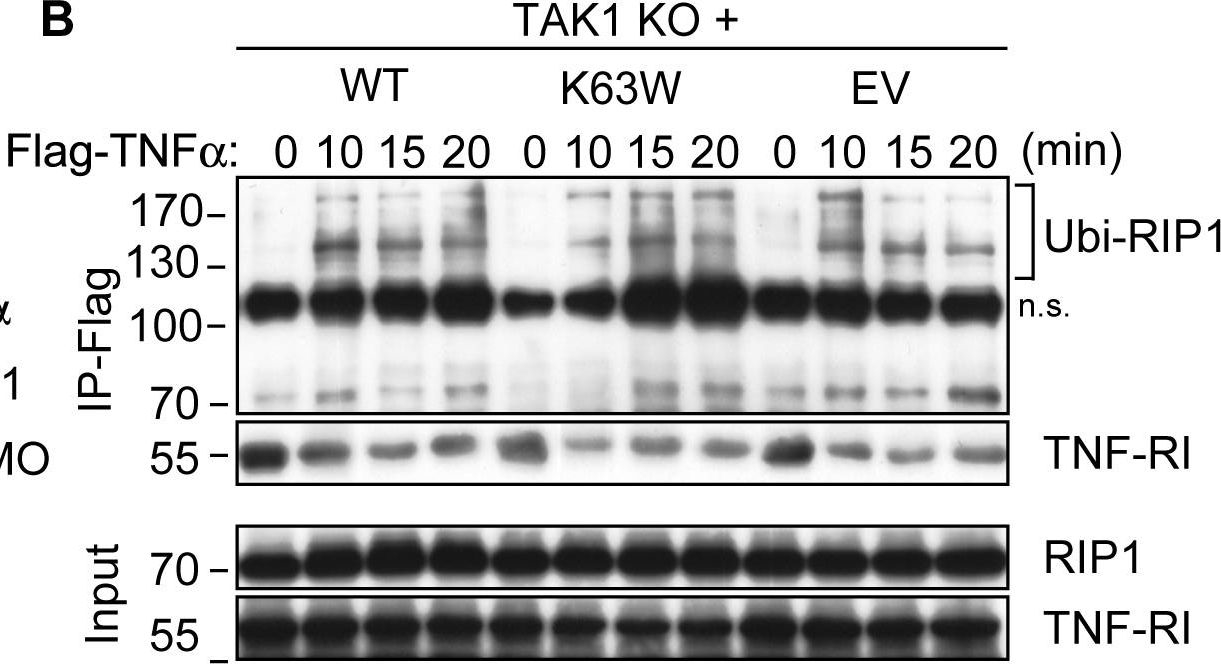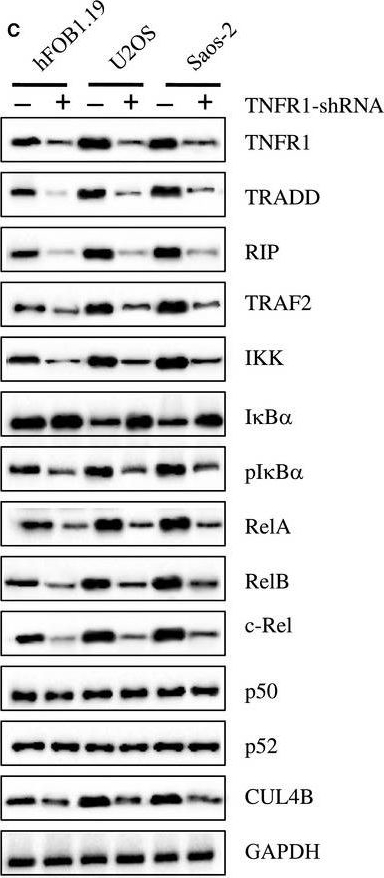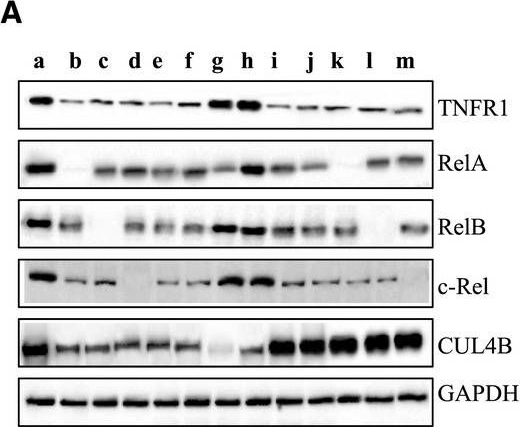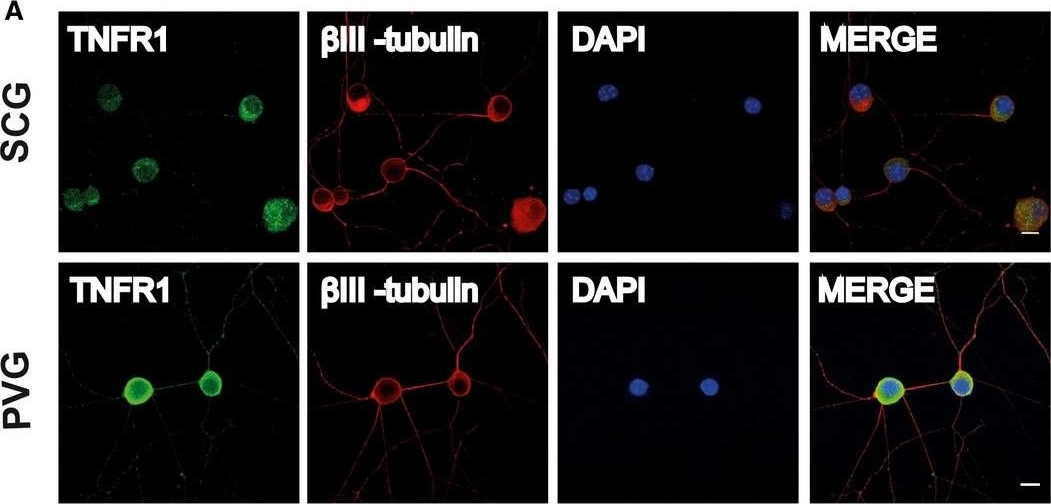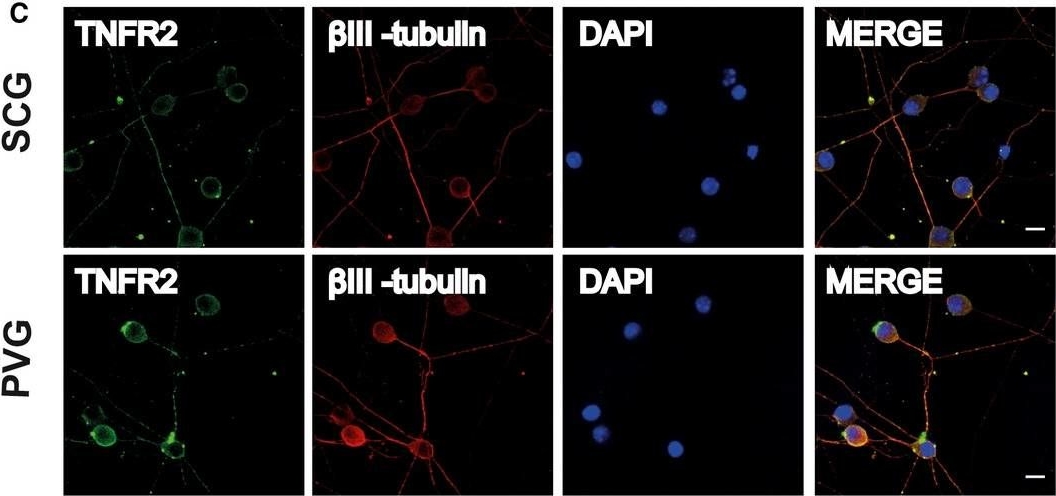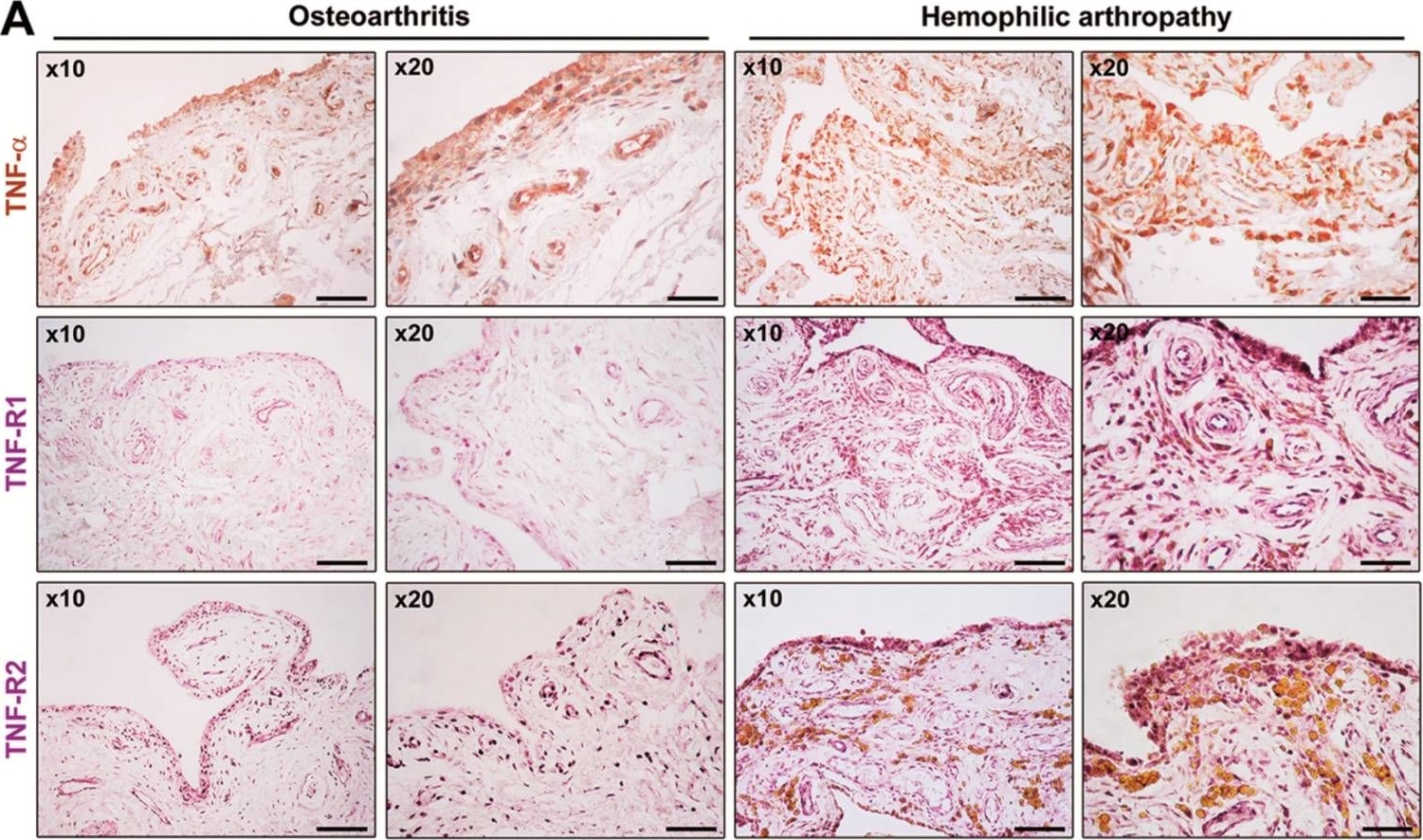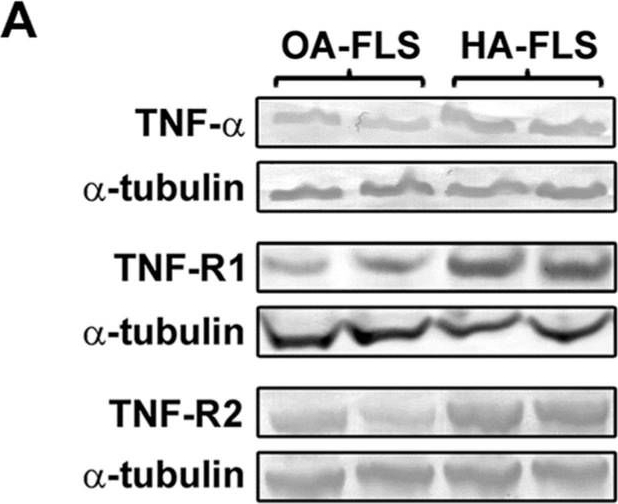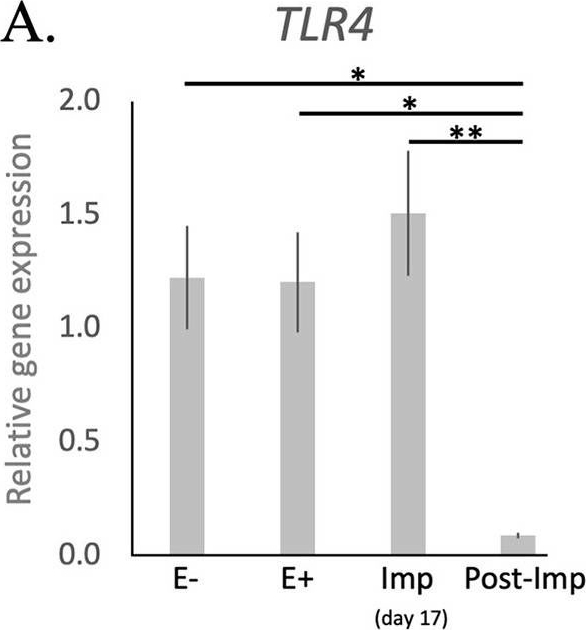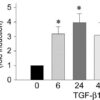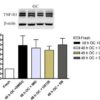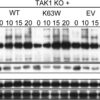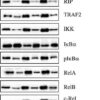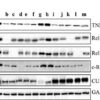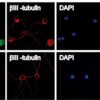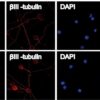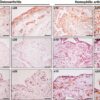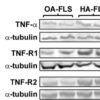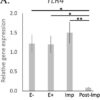Anti-TNF-R1 Antibody (11062-200)
$683.00
| Host | Quantity | Applications | Species Reactivity | Data Sheet | |
|---|---|---|---|---|---|
| Rabbit | 200ug | WB,IHC | Human, Mouse, Rat, Rabbit, Hamster, Sheep, Monkey, Bovine, Canine, Porcine, Drosophila, Xenopus, Yeast |  |
SKU: 11062-200
Categories: Antibody Products, Growth Factors/Cytokines/Receptor Antibodies, Products
Overview
Product Name Anti-TNF-R1 Antibody (11062-200)
Description Anti-TNF-R1 Antibody Rabbit Polyclonal Antibody
Target TNF-R1
Species Reactivity Human, Mouse, Rat, Rabbit, Hamster, Sheep, Monkey, Bovine, Canine, Porcine, Drosophila, Xenopus, Yeast
Applications WB,IHC
Host Rabbit
Clonality Polyclonal
Immunogen A synthetic peptide corresponding to a portion of mouse TNF-R1. This sequence is completely conserved in rat and human. Accession no. P25118.
Properties
Form Liquid
Concentration Lot Specific
Formulation PBS containing 50% glycerol and 0.09% sodium azide.
Buffer Formulation Phosphate Buffered Saline
Buffer Anti-Microbial 0.09% Sodium Azide
Buffer Cryopreservative 50% Glycerol
Format Purified
Purification Purified by peptide affinity chromatography
Specificity Information
Target ID TNF-R1
Uniprot ID P19438
Alternative Names Tumor necrosis factor receptor 1 (TNF-R1), Tumor necrosis factor receptor type I (TNF-RI; TNFR-I), p55, p60
Research Areas Growth Factors, Cytokines, Receptors
Background Tumor necrosis factor alpha (TNF-alpha), also known as cachetin, is a memberof the TNF superfamily of cytokines that is a potent lymphoid factor with effecs on a wide range of target cells. TNF exerts proinflamatory signals va binding and inducing trimerization of TNF-receptor 1 (TNF-R1) expressed on most normal and transformed cells. TNF signaling regulates hematopoiesis, differentiation, endothelial cell activation, apoptosis, lipid metabolism, tumor progression, and immune surveillance. Dysregulation of TNF or its receptors is implicated in numerous diseases including cancer, osteoporosis, autoimmune disease, diabetes, and atherosclerosis.
Application Images











Description Western blot showing TNF-a and TNF-R1 protein expression levels in the cerebral artery after 24 and 48 h organ culture (OC) as compared with fresh vessel (control). Beta-actin was used as a loading control. Data are expressed as mean ± S.E.M., n = 4. *P < 0.05, **P < 0.01 and *** P < 0.001.

Description Western blot of TNF-a, TNF-R1 and TNF-R2 protein levels from rat cerebral arteries; after 0 h (fresh), 48 h organ culture (OC) + DMSO, 48 h OC + (IMD-0354, SB386023-b or U0126) together with Beta-actin as loading control are shown. UO126 treatment significantly decreased the increase protein level of TNF-a after 48 h culture (a). Data are presented as the TNF-a, TNF-R1 and TNF-R2/Beta-actin mean optical density ratio relative to fresh (a-b) or vehicle (48 h OC + DMSO) (c). Data are presented as mean S.E.M. *P < 0.05.

Description TAK1 blocks TNFa-induced necrosis independently of its kinase activity.(A) TAK1 KO MEFs transfected with a WT or a kinase-dead mutant (K63W) construct of TAK1 along with untransfected and empty-vector (EV) transfected cells were stimulated with TNFa and analyzed by WB for IκBa degradation as well as TAK1 and NEMO expression. (B) Cells were stimulated with Flag-TNFa and Ubi-RIP1 interaction with complex-I was analyzed by immunoprecipitating Flag-TNFa-bound TNF-RI and associated factors by a-Flag M2 affinity beads as in Fig. 3C. (C) Indicated cells were stimulated with TNFa and necrosome formation was investigated by immunoprecipitating FADD as in Fig. 3A and 3B. (D) Cells were stimulated with TNFa and cell survival was analyzed by CV. The bar graphs depict mean values ± SEM %. (E) Cells were stimulated with TNFa and caspase activation was assessed by WB analysis. (F) Cells were treated with TNFa and intracellular ROS accumulation was analyzed by flow cytometry. (*) denotes the p43 fragment of caspase-8 and cFLIPL. (#) denotes cleaved caspase-3 (p15). n.s., non-specific band.

Description TNFa/NFkB axis is activated in human osteosarcoma cells. (A) The protein levels of critical members in the TNFa/NFkB axis. The protein levels of TNFR1, TRADD, RIP, TRAF2, IKK, IκBa, phosphorylated IκBa (pIκBa), RelA, RelB, c‐Rel, p50, p52, and CUL4B were measured in hFOB1.19, U2OS, MG63, Saos‐2, and HOS cells. GAPDH was used as the loading control. (B) Effects of SPD304 on the protein levels of the TNFa/NFkB axis members. hFOB1.19, U2OS, MG63, Saos‐2, and HOS cells were treated with SPD304 for 24 h, and then, the levels of proteins indicated in (A) were determined by immunoblots. (C) Effects of knocking down KNFR1 on the protein levels of the TNFa/NFkB axis members. hFOB1.19, U2OS, and Saos‐2 cells were transfected with TNFR1‐shRNA, and the stable cell lines were subjected to immunoblots to determine the TNFa/NFkB axis member protein levels.

Description Blockage of TNFa/NFkB axis inhibits osteosarcoma cell growth. (A) Blockage of the TNFa/NFkB axis decreased TNFR1, RelA, RelB, c‐Rel, and CUL4B levels. U2OS cells transfected with con‐shRNA (a), U2OS‐TNFR1‐KD + RelA‐KD (b), U2OS‐TNFR1‐KD + RelB‐KD (c), U2OS‐TNFR1‐KD + c‐RelA‐KD (d), U2OS‐SPD304 (e), U2OS‐TNFR1‐KD (f), U2OS‐RelA‐KD + CUL4B‐KD (g), U2OS‐CUL4B‐KD (h), U2OS‐TNFR1‐KD + CUL4B (i), U2OS‐SPD304 + CUL4B (j), U2OS‐TNFR1‐KD + RelA‐KD + CUL4B (k), U2OS‐TNFR1‐KD + RelB‐KD + CUL4B (l), and U2OS‐TNFR1‐KD + c‐Rel‐KD + CUL4B (m) were subjected to western blots to examine the protein levels of TNFR1, RelA, RelB, c‐Rel, and CUL4B. GAPDH was used as a loading control. (B) Blockage of the TNFa/NFkB axis inhibited osteosarcoma cell proliferation. Cells used in (A) were analyzed using the MTT assay to evaluate cell proliferation with absorbance measurement at 490 nm. (C) Blockage of the TNFa/NFkB axis decreased colony formation rates. Cells from A were seeded onto 12‐well plates and cultured with 0.1 mL of fresh medium containing 0.5% FBS for two weeks. **P < 0.001. (D) Blockage of the TNFa/NFkB axis decreased cell invasion. Cells from A were subjected to Boyden chamber assays, and the invasive cells were counted. **P < 0.001. (E) Blockage of the TNFa/NFkB axis decreased the in vivo tumor forming ability. Cells from A were injected intradermally into the flanks of mice. Tumor volumes were measured with fine calipers at 5‐day intervals.

Description Immunolocalization of TNF, TNFR1, and TNFR2 on SCG and PVG neurons. Representative photomicrographs of P0 SCG neurons and PVG neurons double labeled with either anti‐TNFR1 and anti‐BetaIII‐tubulin antibodies (A) or anti‐TNF and anti‐BetaIII‐tubulin antibodies (B) or anti‐TNFR2 and anti‐BetaIII‐tubulin antibodies (C) after 24‐h culture in NGF‐supplemented medium. The preparations were also counterstained with the nuclear marker, DAPI. Scale bars, 10 μm. [Colour figure can be viewed at wileyonlinelibrary.com]

Description Immunolocalization of TNF, TNFR1, and TNFR2 on SCG and PVG neurons. Representative photomicrographs of P0 SCG neurons and PVG neurons double labeled with either anti‐TNFR1 and anti‐BetaIII‐tubulin antibodies (A) or anti‐TNF and anti‐BetaIII‐tubulin antibodies (B) or anti‐TNFR2 and anti‐BetaIII‐tubulin antibodies (C) after 24‐h culture in NGF‐supplemented medium. The preparations were also counterstained with the nuclear marker, DAPI. Scale bars, 10 μm. [Colour figure can be viewed at wileyonlinelibrary.com]

Description Expression of tumor necrosis factor (TNF)-a, TNF receptor 1 (TNF-R1), and TNF receptor 2 (TNF-R2) in synovial tissue from patients with hemophilic arthropathy (HA) and osteoarthritis (OA). (A) Representative microphotographs of tissue sections subjected to immunoperoxidase-based immunohistochemical staining for TNF-a (brown color), TNF-R1, and TNF-R2 (purple color) are shown. TNF-a, TNF-R1, and TNF-R2 immunostaining is strongly increased either in the hyperplastic lining or in the sublining layers of the HA synovium compared to non-inflamed OA control synovium. Original magnification: ×10 and ×20. Scale bar: 200 µm (×10 panels), 100 µm (×20 panels). (B) Western blotting of total protein extracts from the synovium of HA patients (n = 10) and OA controls (n = 8). Representative immunoblots for TNF-a, TNF-R1, and TNF-R2 are shown. The densitometric analysis of the bands normalized to a-tubulin is reported in the histograms. Data are the mean ± SEM of the optical density in arbitrary units (a.u.). * p < 0.05 vs. OA (Student’s t-test).

Description Fibroblast-like synoviocytes (FLS) from patients with hemophilic arthropathy (HA-FLS) overexpress tumor necrosis factor (TNF)-a, TNF receptor 1 (TNF-R1), and TNF receptor 2 (TNF-R2) and effectively proliferate in response to TNF-a. (A) Western blotting of total protein extracts from cultured HA-FLS and osteoarthritis control FLS (OA-FLS). Representative TNF-a, TNF-R1, and TNF-R2 immunoblots are shown; a-tubulin was used as a loading control. The densitometric analysis of the bands normalized to a-tubulin is reported in the histograms. Data are mean ± SEM of optical density in arbitrary units (a.u.). * p < 0.05 vs. OA-FLS (Student’s t-test). (B) Cell viability evaluated at the basal condition or after treatment with recombinant human TNF-a (10 ng/mL) using the water-soluble tetrazolium (WST)-1 cell proliferation reagent. Cell viability in response to TNF-a is expressed as the percentage increase/decrease over the basal response for both HA-FLS and OA-FLS. Bars represent the mean ± SEM. Results are representative of three independent experiments performed with each one of the six HA-FLS and six OA-FLS lines. * p < 0.05 vs. the respective basal condition (Student’s t-test). (C) Levels of active (cleaved) caspase-3 in HA-FLS and OA-FLS, as measured by the specific enzyme-linked immunosorbent assay on cell lysates. Data are the mean ± SEM of three independent experiments performed in triplicate with each one of the six HA-FLS and six OA-FLS lines.

Description Relative gene expression and localization of TLR4, IDO1 and AIF1 in the canine uterus. (A–C) Relative gene expression as determined by semi-quantitative real time (TaqMan) PCR (mean ± SEM). One-way ANOVA was applied to test the variation among the investigated groups, revealing: P = 0.0033 for TLR4, P = 0.03 for IDO1, and P = 0.04 for AIF1. In the case of P < 0.05, this was followed by Tukey-Kramer multiple comparisons post-test. Bars with asterisks differ at: *P < 0.05, **P < 0.01. (D–M) Immunohistochemical localization of members of the TNF-system, IDO1, and AIF1 in the canine uterus at selected stages of early pregnancy. Signals of TNFa were present in macrophages during the pre-implantation (D) and implantation (E) periods. Similarly, both TNFR1 (F) and TNFR2 (G,H) were present in macrophages. In addition, weaker signals for both receptors were also observed in epithelial cells of uterine glands during pre-implantation (F,G) and in endothelial cells (F,H). Positive signals of IDO1 were detected in macrophages between superficial glands during pre-implantation (I) and were also detected in endothelial cells at the time of implantation (J). At post implantation, weaker signals were observed in macrophages localized in deep endometrium layers, as well as in endothelial cells (K). AIF1 positive signals were identified in macrophages close to superficial uterine glands in pre-implantation (L) and implantation (M) stages, while at post-implantation they were localized in the deep layer of the endometrium (N). Some weak signals were also observed in uterine glands at the pre-implantation period (L), while apparently stronger signals were observed in the same glands at implantation (M) and post-implantation (N). Weak positive signals were also detected in endothelial cells (M, N) (solid arrow = macrophages; closed arrowhead = uterine gland; open arrowhead = blood vessel). No staining is observed in the isotype controls [inset in (D,F,G,I,L)].
Handling
Storage Store frozen product at or below -20°C. Thawed product may be stored for 2-4 weeks at 4°C. For optimal storage, aliquot and store at -20°C.
Dilution Instructions Dilute in PBS or medium which is identical to that used in the assay system.
Application Instructions Western Blot: 1ug/ml
Immunohistochemistry(paraffin): 1-10ug/ml
Immunoprecipitation: 12.5ug/ml
These are recommended concentrations.
End user should determine optimal concentrations for their applications.
Immunohistochemistry(paraffin): 1-10ug/ml
Immunoprecipitation: 12.5ug/ml
These are recommended concentrations.
End user should determine optimal concentrations for their applications.
References & Data Sheet
References Qiu, Q., Lin, Y., et al. Evid Based Complement Alternat Med. 2014
2014:571076
Lee, S. M., Yang, S., et al. PLoS One. 2014 Aug 6
9(8):e104354.
Rickard, J. A., Anderton, H., et al. Elife. 2014 Dec 2
3:e03464
Siemieniuch, M. J., Szóstek, A. Z., et al. PLoS One. 2016 May 6
11(5):e0154934
Jaco, I., Annibaldi, A., et al. Mol Cell. 2017 Jun 1
66(5):698-710.e5
Xing, J., Lu, J., et al. Front Physiol . 2018 Oct 15
9:1461 The role of tumor necrosis factor-a and TNF-a receptors in cerebral arteries following cerebral ischemia in rat. J Neuroinflammation (2011) [21871121]
The prevalence of TNFa-induced necrosis over apoptosis is determined by TAK1-RIP1 interplay. PLoS One (2011) [22016814]
Activation of TNF-a/NF-kB axis enhances CRL4BDCAF11 E3 ligase activity and regulates cell cycle progression in human osteosarcoma cells. Mol Oncol (2018) [29377600]
Regional Differences in the Contributions of TNF Reverse and Forward Signaling to the Establishment of Sympathetic Innervation. Dev Neurobiol (2019) [31004466]
TNF-a/TNF-R System May Represent a Crucial Mediator of Proliferative Synovitis in Hemophilia A. J Clin Med (2019) [31261789]
Selected Uterine Immune Events Associated With the Establishment of Pregnancy in the Dog. Front Vet Sci (2021) [33634180]
Breast Density and Estradiol Are Major Determinants for Soluble TNF-TNF-R Proteins in vivo in Human Breast Tissue. Front Immunol (2022) [35432372]
2014:571076
Lee, S. M., Yang, S., et al. PLoS One. 2014 Aug 6
9(8):e104354.
Rickard, J. A., Anderton, H., et al. Elife. 2014 Dec 2
3:e03464
Siemieniuch, M. J., Szóstek, A. Z., et al. PLoS One. 2016 May 6
11(5):e0154934
Jaco, I., Annibaldi, A., et al. Mol Cell. 2017 Jun 1
66(5):698-710.e5
Xing, J., Lu, J., et al. Front Physiol . 2018 Oct 15
9:1461 The role of tumor necrosis factor-a and TNF-a receptors in cerebral arteries following cerebral ischemia in rat. J Neuroinflammation (2011) [21871121]
The prevalence of TNFa-induced necrosis over apoptosis is determined by TAK1-RIP1 interplay. PLoS One (2011) [22016814]
Activation of TNF-a/NF-kB axis enhances CRL4BDCAF11 E3 ligase activity and regulates cell cycle progression in human osteosarcoma cells. Mol Oncol (2018) [29377600]
Regional Differences in the Contributions of TNF Reverse and Forward Signaling to the Establishment of Sympathetic Innervation. Dev Neurobiol (2019) [31004466]
TNF-a/TNF-R System May Represent a Crucial Mediator of Proliferative Synovitis in Hemophilia A. J Clin Med (2019) [31261789]
Selected Uterine Immune Events Associated With the Establishment of Pregnancy in the Dog. Front Vet Sci (2021) [33634180]
Breast Density and Estradiol Are Major Determinants for Soluble TNF-TNF-R Proteins in vivo in Human Breast Tissue. Front Immunol (2022) [35432372]
PMID 24817898
25098821
25443632
27152525
28506461
30374312
21871121
22016814
29377600
31004466
31261789
33634180
35432372
25098821
25443632
27152525
28506461
30374312
21871121
22016814
29377600
31004466
31261789
33634180
35432372
Data Sheet  Download PDF Data Sheet
Download PDF Data Sheet
 Download PDF Data Sheet
Download PDF Data Sheet

